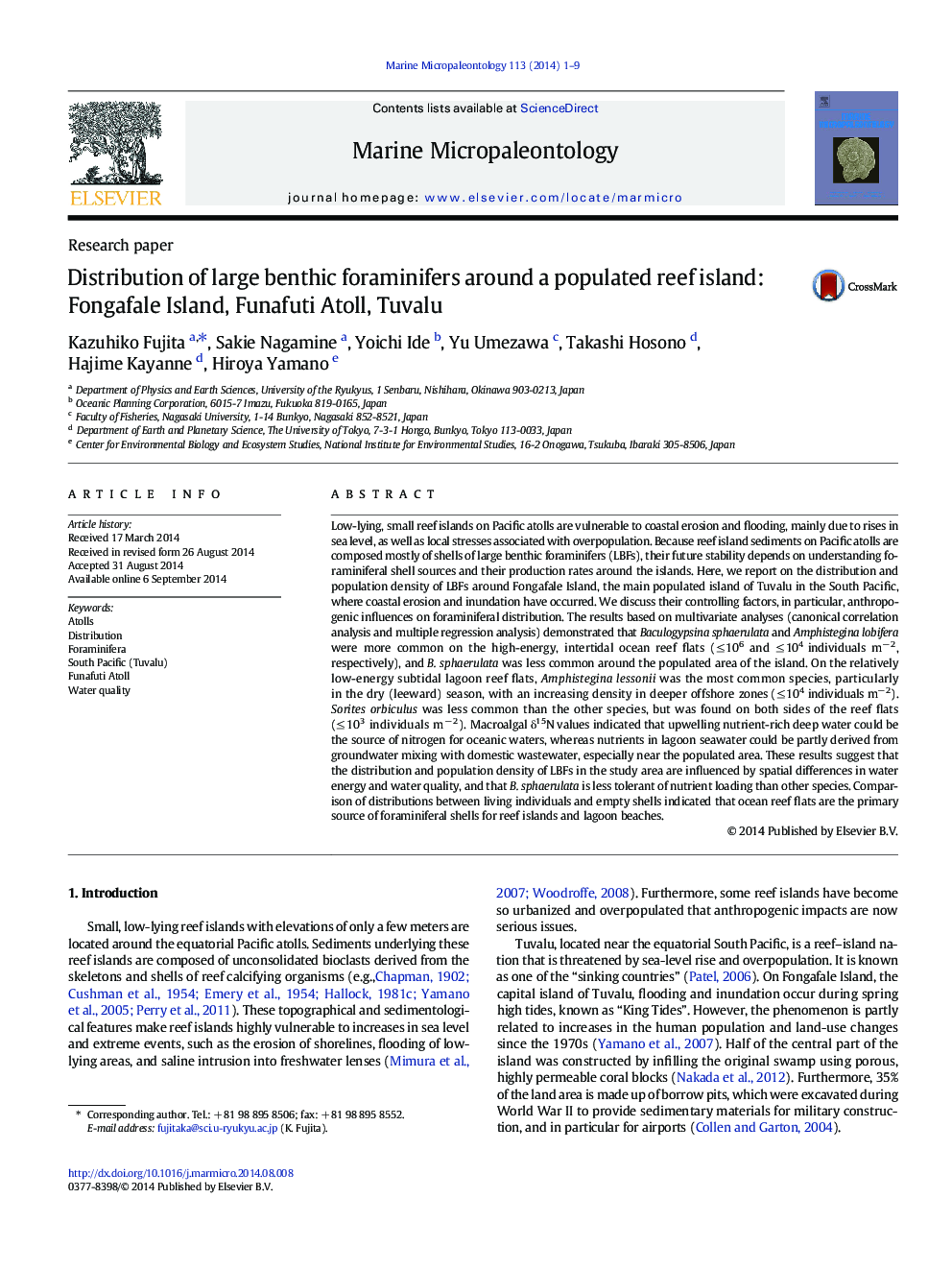| کد مقاله | کد نشریه | سال انتشار | مقاله انگلیسی | نسخه تمام متن |
|---|---|---|---|---|
| 6448536 | 1642172 | 2014 | 9 صفحه PDF | دانلود رایگان |
عنوان انگلیسی مقاله ISI
Distribution of large benthic foraminifers around a populated reef island: Fongafale Island, Funafuti Atoll, Tuvalu
ترجمه فارسی عنوان
توزیع فورنینیفرهای بنتس بزرگ در اطراف یک جزیره ماهیان پرجمعیت: جزیره فونگفائل، فونافوتی آتول، تووالو
دانلود مقاله + سفارش ترجمه
دانلود مقاله ISI انگلیسی
رایگان برای ایرانیان
موضوعات مرتبط
مهندسی و علوم پایه
علوم زمین و سیارات
فسیل شناسی
چکیده انگلیسی
Low-lying, small reef islands on Pacific atolls are vulnerable to coastal erosion and flooding, mainly due to rises in sea level, as well as local stresses associated with overpopulation. Because reef island sediments on Pacific atolls are composed mostly of shells of large benthic foraminifers (LBFs), their future stability depends on understanding foraminiferal shell sources and their production rates around the islands. Here, we report on the distribution and population density of LBFs around Fongafale Island, the main populated island of Tuvalu in the South Pacific, where coastal erosion and inundation have occurred. We discuss their controlling factors, in particular, anthropogenic influences on foraminiferal distribution. The results based on multivariate analyses (canonical correlation analysis and multiple regression analysis) demonstrated that Baculogypsina sphaerulata and Amphistegina lobifera were more common on the high-energy, intertidal ocean reef flats (â¤Â 106 and â¤Â 104 individuals mâ 2, respectively), and B. sphaerulata was less common around the populated area of the island. On the relatively low-energy subtidal lagoon reef flats, Amphistegina lessonii was the most common species, particularly in the dry (leeward) season, with an increasing density in deeper offshore zones (â¤Â 104 individuals mâ 2). Sorites orbiculus was less common than the other species, but was found on both sides of the reef flats (â¤Â 103 individuals mâ 2). Macroalgal δ15N values indicated that upwelling nutrient-rich deep water could be the source of nitrogen for oceanic waters, whereas nutrients in lagoon seawater could be partly derived from groundwater mixing with domestic wastewater, especially near the populated area. These results suggest that the distribution and population density of LBFs in the study area are influenced by spatial differences in water energy and water quality, and that B. sphaerulata is less tolerant of nutrient loading than other species. Comparison of distributions between living individuals and empty shells indicated that ocean reef flats are the primary source of foraminiferal shells for reef islands and lagoon beaches.
ناشر
Database: Elsevier - ScienceDirect (ساینس دایرکت)
Journal: Marine Micropaleontology - Volume 113, December 2014, Pages 1-9
Journal: Marine Micropaleontology - Volume 113, December 2014, Pages 1-9
نویسندگان
Kazuhiko Fujita, Sakie Nagamine, Yoichi Ide, Yu Umezawa, Takashi Hosono, Hajime Kayanne, Hiroya Yamano,
